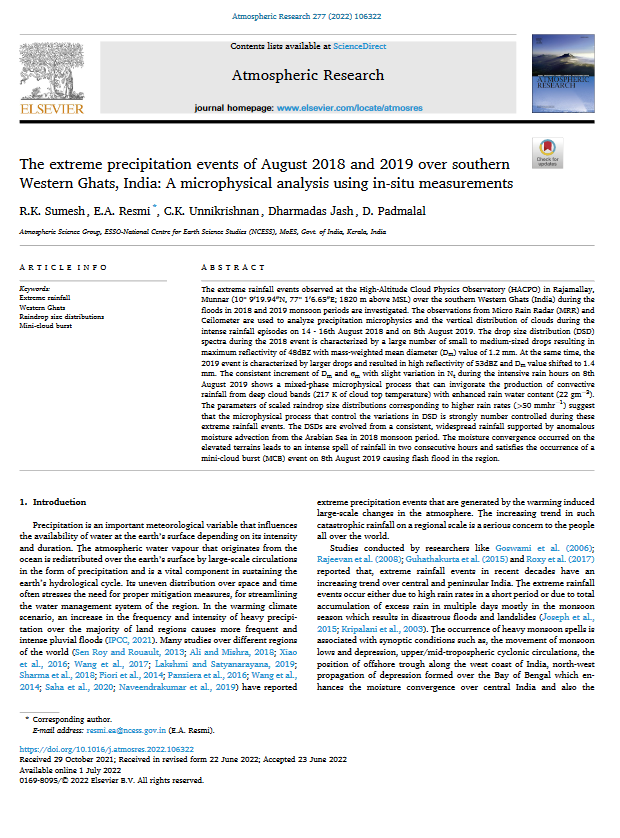
The extreme rainfall events observed at a High- Altitude Cloud Physics Observatory (HACPO) site in Rajamallay, Munnar (10° 9’ 19.94” N, 77° 1’ 6.65” E, 1820 m above MSL) over the southern Western Ghats (India) during the floods in 2018 and 2019 monsoon periods (16th August 2018 and on 8th August 2019) have been investigated. The drop size distribution (DSD) spectra during the 2018 event are characterized by a large number of small to medium-sized drops resulting in maximum reflectivity of 48 dBZ with mass-weighted mean diameter (Dm) value of 1.2 mm. At the same time, the 2019 event is characterized by larger drops and resulted in high reflectivity of 53 dBZ and Dm value shifted to 1.4 mm. The consistent increment of Dm with variation in number concentration of drops during the intensive rain hours on 8th August 2019 shows a mixed- phase microphysical process that can invigorate the production of convective rainfall from deep cloud bands (217 K of cloud top temperature) with enhanced rain water content (22 gm-3 ). The parameters of scaled raindrop size distributions corresponding to higher rain rates (>50mmhr-1 ) suggest that the microphysical process that control the variations in DSD is strongly number controlled during these extreme rainfall events. The DSDs are evolved from a consistent, widespread rainfall supported by anomalous moisture advection from the Arabian Sea in 2018 monsoon period. The moisture convergence occurred on the elevated terrains leads to an intense spell of rainfall in two consecutive hours satisfies the occurrence of mini-cloud burst events on 8th August 2019 causing flash flood in the region.
Bibliographic Info: Sumesh, R. K., Resmi, E. A., Unnikrishnan, C. K., Dharmadas Jash, Padmalal, D. (2022). The extreme precipitation events of August 2018 and 2019 over southern Western Ghats, India A microphysical analysis using in-situ measurements. Atmospheric Research, Vol. 277, Art. 106322. https://doi.org/10.1016/j.atmosres.2022.106322.




 RTI Act
RTI Act
